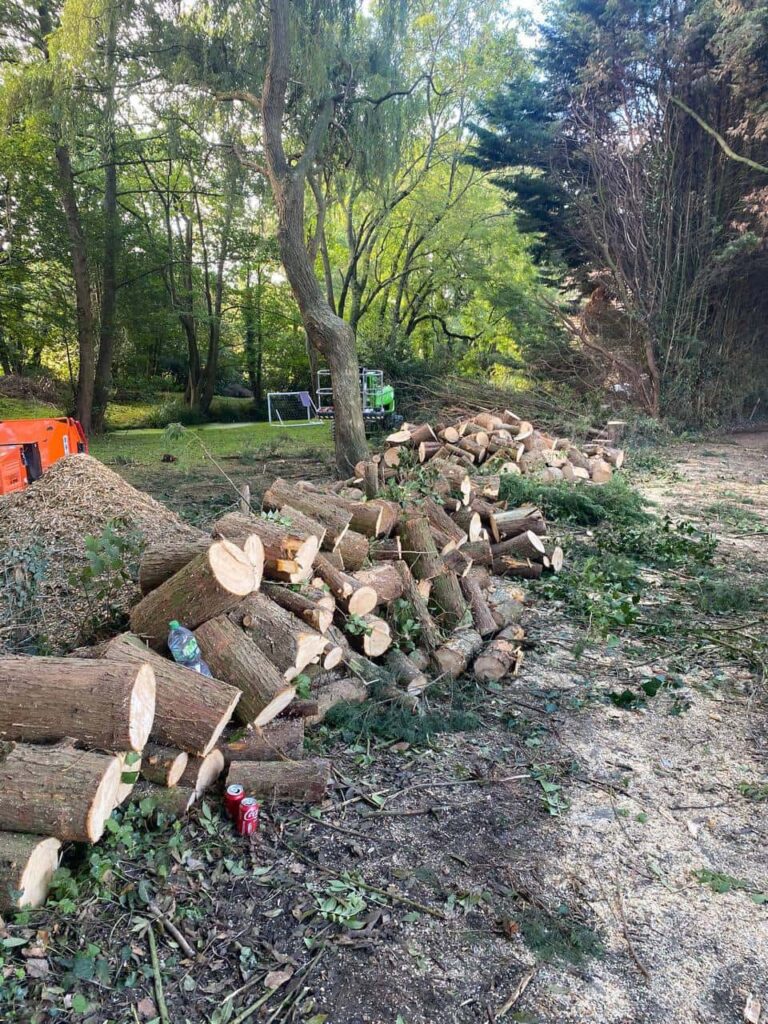Patio and seating areas are often the heart of a garden, providing a comfortable outdoor space for relaxation, dining, and socialising. When trees grow close to these areas, however, they can introduce risks that many homeowners may not immediately notice. Overhanging branches, unstable growth, root spread, and excessive shading can all affect the safety and enjoyment of these spaces. Professional tree care plays a crucial role in ensuring that these risks are managed properly. Linton Tree Surgeons helps homeowners throughout Linton, Cambridge maintain safe, welcoming outdoor seating areas through expert tree management.
Why Trees Near Patios Need Regular Assessment
Trees naturally enhance the garden environment, but those situated close to patios or garden seating areas require a higher level of attention. With constant use of these spaces, any issue involving a nearby tree becomes more significant. A branch that might fall unnoticed elsewhere in the garden becomes a real hazard when positioned above outdoor furniture. Seasonal weather patterns—especially high winds, heavy rainfall, and winter frost—can weaken branches, loosen limbs, or shift growth in ways that go unnoticed without a professional eye.
Over time, trees also grow quietly and steadily. A branch that was safely positioned years ago may now reach over the patio, become heavier, or begin to split. Professional assessment ensures these gradual changes are identified early.
The Hidden Hazards of Trees Near Seating Areas
One of the most common risks comes from falling or weakened branches. Deadwood can remain lodged in the canopy, only becoming dangerous during a sudden gust of wind. Even healthy branches may become overextended if not managed, making them more prone to failure. This is particularly concerning where family seating areas, barbecue spots, or dining spaces are positioned beneath the canopy.
Excessive overhang is another frequent problem. When branches stretch across patios, they create deep shade that encourages dampness, moss, and slippery surfaces on paving. This not only affects safety but reduces how comfortable and appealing the seating area feels. A dense canopy also traps debris, making patios difficult to keep clean and contributing to moisture problems around garden structures.
Roots can also cause trouble beneath the surface. If a tree is positioned too close to paving, the roots may begin to lift slabs, disrupt levels, or interfere with drainage systems. While this often occurs slowly, the long-term impact can be costly and inconvenient if left unmanaged.
How Professional Tree Surgeons Improve Safety
Tree surgeons take a structured approach to reducing hazards around patio areas. One of the key methods is selective pruning. By removing dead, weakened, or crowded branches, the tree becomes lighter, better balanced, and less prone to breakage. This also encourages healthier growth and allows more natural light into the seating area, improving comfort and reducing moisture retention on surfaces.
Canopy lifting is another effective technique used by professionals. This involves removing some of the lower branches to raise the height of the canopy. Doing so creates more open space around the patio, reduces shading, and minimises the amount of debris falling directly onto outdoor furniture and paving. It also improves visibility and airflow, making the garden feel more spacious and inviting.
Professional tree surgeons also assess wind resistance. Trees with overly dense canopies can behave like sails during storms, increasing the chance of branch failure. By thinning the canopy carefully, the wind can pass through more freely, reducing the strain on the tree during poor weather.
Root management is another important aspect. Tree surgeons can monitor root spread, identify early signs of disruption to patios or seating pads, and advise on preventative steps. Early intervention helps protect paving, drainage, and surrounding structures.
Improving the Quality and Enjoyment of Outdoor Spaces
Tree surgery is not purely about safety. A well-maintained tree significantly enhances the look and feel of the garden. When branches are managed correctly, patios receive more natural daylight and stay cleaner for longer. Without excessive shade or debris, patio furniture lasts longer, surfaces stay drier, and the entire seating area feels more inviting.
Thoughtful pruning also maintains the natural beauty of the tree. Instead of appearing overgrown or unbalanced, the tree develops a healthier, more attractive structure that complements the garden rather than overwhelming it.
Why Homeowners in Linton Choose Linton Tree Surgeons
Linton Tree Surgeons has extensive experience managing trees around patios, seating areas, and high-use garden spaces across Linton, Cambridge. With a careful approach that prioritises both safety and long-term tree health, the team ensures that every garden retains its natural beauty while remaining safe and practical for everyday use. Their knowledge of tree behaviour, structural risks, and specialist pruning methods means homeowners can enjoy complete confidence in the safety of their outdoor areas.
Conclusion
Trees near patios and seating areas bring beauty and shade, but they also require regular care to prevent hazards and maintain a comfortable environment. Professional tree surgeons help manage branch structure, reduce debris, prevent root damage, and ensure trees remain stable in changing weather. With expert support from Linton Tree Surgeons, homeowners in Linton, Cambridge can enjoy safe, clean, and inviting garden spaces all year round.
Call us on: 01223 919 495
Click here to find out more about Linton Tree Surgeons
Click here to complete our contact form and see how we can help with your tree needs.

